
- Home
- Special Interests
Mysterious Hemingrays

Whether it's a new embossing, color, or even a new CD, collectors occasionally discover Hemingray insulators that have somehow remained under the radar for decades. On this page, we'll be discussing the Mysterious Hemingrays; that is, Hemingray insulators we have drawings of, but nobody has ever seen in the past 50+ years!
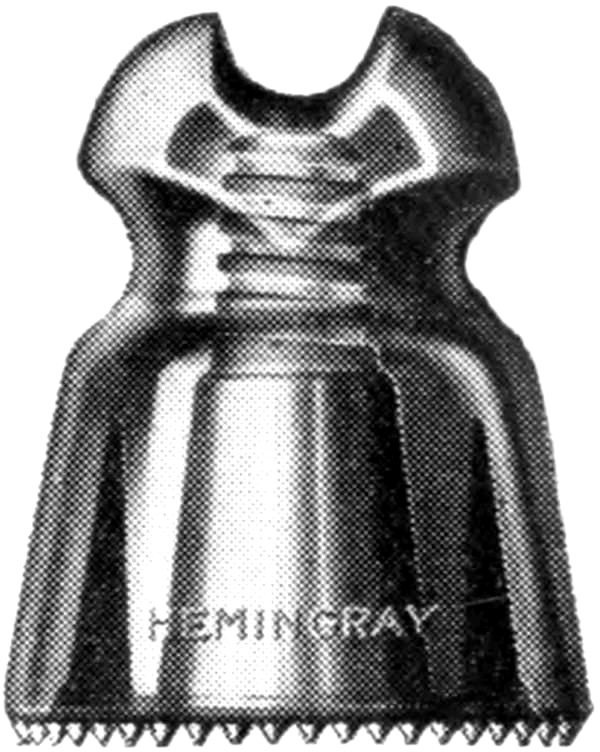
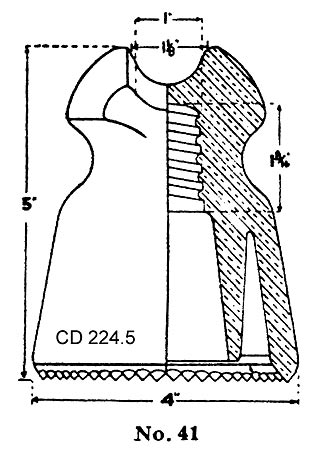
Of all the pieces we've yet to see, the Hemingray №41, tradenamed "Long Double Petticoat", is the one I hold out the most hope for: it has actually shown up in multiple insulator catalogs dating from the 1913-1917 time period! Hemingray supposedly only marketed insulators that they had actually produced. Yet, strangely, no specimens have ever been found to date, and no shards have been found in the Hemingray dump.
The dimensions are 4" wide x 5" high. It weighs 2.75 pounds, was rated for 6000 volts, and cost $85.00 per thousand. N.R. Woodward, the creator of the CD numbering system, even reserved CD 224.5 for this design should one ever be found. Based on the dates in which these appeared in catalogs, the glass color would most likely be aqua or Hemingray Blue.
If you have seen one (or better yet, have one you'd like to sell) please contact me!
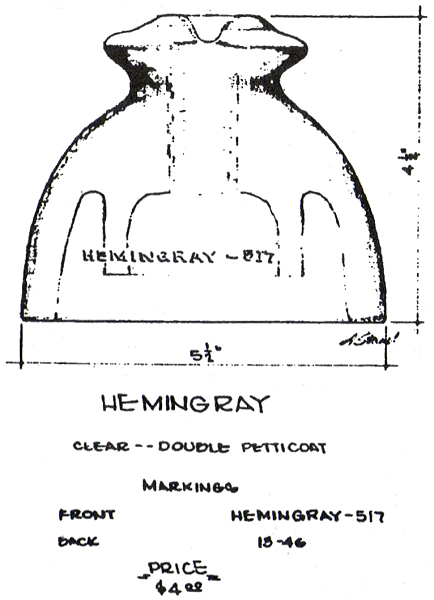
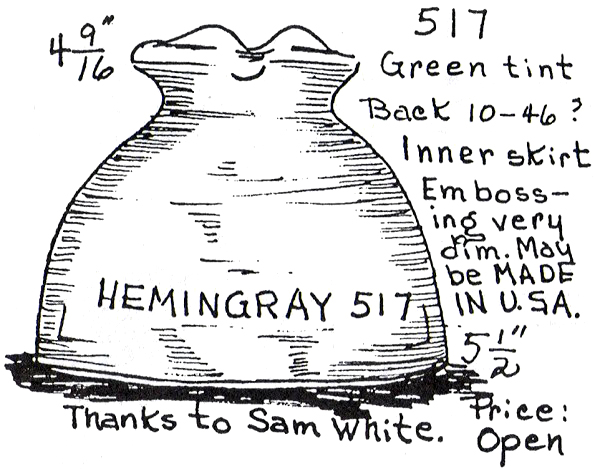
The Hemingray - 517 appears in not one, but two early books in the collecting hobby. The first drawing is from Lynn Stuart's 1968 book "Insulator Guide". The second drawing is from Frances Terrill's 1971 book "Book #3, Hemingray Insulators Priced".
The dimensions are 4 1/2" high, 5 1/2" wide. Based on the mold numbers 10-46 and 13-46, these would have been manufactured in 1946, and would suggest that no less than 13 of these molds were made. Also, 517 would fit neatly in Hemingray's 51X power series: 510, 511, 512, 513, 514, 515, 518, and 519. Notice the absence of 516 and 517 in that lineup.
Curiously, this style has never been found in any Hemingray advertisements or catalogs, and no shards have been dug from the Hemingray dump. Based on the 2 independent drawings with different mold numbers, slightly different dimensions, and fitting in with other Hemingray power styles of that time period, I'm calling this one plausible!
If you have seen one (or better yet, have one you'd like to sell) please contact me!
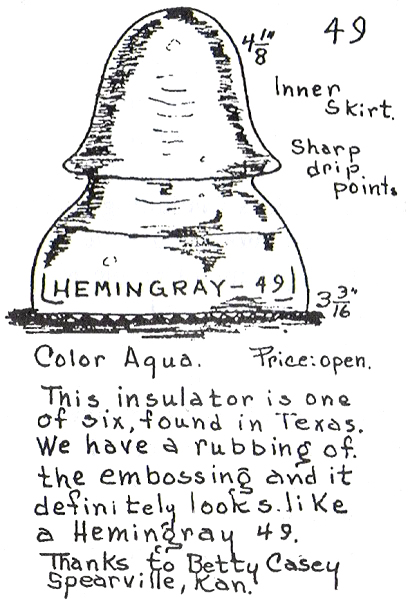
Frances Terrill published a book in 1971 entitled Book #3, Hemingray Insulators Priced. According to the book, six of these Hemingray-49's were found in Texas and reported by a Betty Casey of Spearville, Kansas. Based on the dimensions (3 3/16" wide, 4 1/8" high), and the presence of an inner skirt, it's fairly similar in size and profile to a CD 162 Hemingray-19. Is it possible they had an embossing error or a "1" that looked like a "4" due to an anomaly in the glass or mold?
This insulator has never appeared in any Hemingray catalogs, nor have any specimens been dug from the Hemingray Dump that even vaguely resembles this design. Additionally, we've yet to find any Hemingray style numbers in the 46-49 range, so it would be odd for Hemingray to have skipped numbers 46, 47, and 48. If it indeed exists, the style number preceded by a dash, combined with sharp drip points (SDP) would approximately date this to the late 1910s or 1920s.
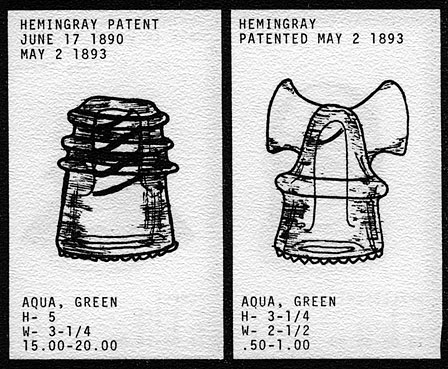
The following two insulators are described in the article "Phantom Insulators" by William C. Ogden, published in Crown Jewels of the Wire, February 1981, page 31. I will quote directly from the article:
"This next one I would call a baby "Mickey Mouse", which is found on p. 37 of Bill Schroeder's 800 Insulators, 1971 ed. It was made in aqua and green; it is 3-1/4" x 2-1/2", making it considerably smaller than the usual "Mickey". It carries the following embossing: HEMINGRAY//PATENTED/MAY 2 1893. It would be a pleasure to find one of these if indeed they exist!"
"Another phantom is a rather large -- 5" x 3-1/4" -- single skirted, two wire-groove insulator with a somewhat flattened dome. From the drawing, it resembles a large version of the CD 115 or exchange style. This also is a Hemingray with both the June 1890 and the May 2 1893 patent dates. Drip points are shown, and it was made in both aqua and green. This is also on p. 37 of Schroeder's 800 Insulators. What was the intended purpose of this insulator? The rather large size might suggest a power insulator, but if so, why then the two wire grooves? The wire grooves are far too close together to use this as a transposition. Again, an interesting insulator!"
William's article did not include any photos of these phantom insulators, so I had to hunt down a copy of Bill Schroeder's 800 Insulators, 1971 edition to see these oddities for myself. Once I turned to page 37, the explanation became painfully obvious to me: the photos were swapped! These two insulators appear side-by-side in the book, so this can be chalked up to a printing error. Mystery solved!